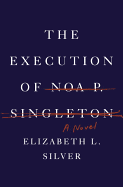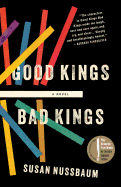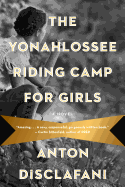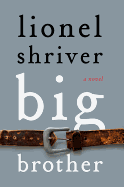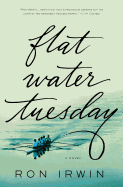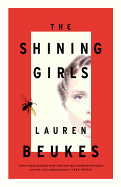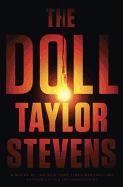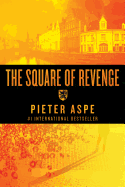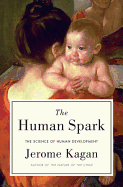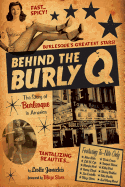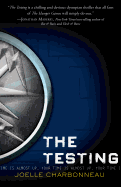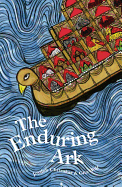 |
| photo: Ulrich Knoblauch |
Lauren Beukes was born in Johannesburg, South Africa, and lives in Cape Town with her husband and daughter. Besides three novels, she has written short stories, journalism, and television scripts. Her first novel, Moxyland (2008), envisions a cyberpunk world in a future Cape Town. Her second, Zoo City (2010), mixes a crime noir thriller with magic and won the Arthur C. Clarke Award in 2011 and was long-listed for the 2012 IMPAC Dublin Literary Award. The Shining Girls (see our review below) is a twisty thriller about a time-traveling serial killer and the survivor who turns the hunt around.
You're known as a writer who likes to bend genres almost to the breaking point. Were you trying to do something similar in your new novel?
I write the stories that occur to me and readers and reviewers define them afterwards. They do tend to come out as strange crossover mash-up beasts.
It's a reflection of all the things I'm interested in and probably some indication of how weird the inside of my head is--like a hoarder house full of pop culture and history and social influences that sometimes come together in alchemical ways.
Were you influenced by other time-travel novels?
I loved The Time Traveler's Wife, which I read years ago, but I specifically avoided any other time travel novels, including Stephen King's. I didn't want to be unduly influenced, and I learned my lesson after reading Oryx & Crake while I was writing my first novel, Moxyland. It was so brilliant (Margaret Atwood, natch) and on such similar territory, that it scared me off writing my own novel for about six months. I think if there's one very obvious influence in The Shining Girls it's actually Christopher Nolan's film Memento, which jumps around in time and memory and you have to trust that he knows where he's taking you.
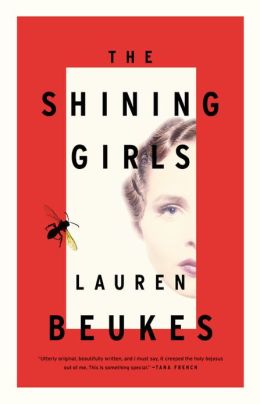 How did your serial killer, Harper Curtis, come about? Is he based on any real-life killers?
How did your serial killer, Harper Curtis, come about? Is he based on any real-life killers?
Harper is informed by characteristics and traits from a number of real killers from Richard Speck to BTK. I read a lot of nonfiction and listened to a ton of true crime podcasts (usually on the treadmill, which proved more effective at getting me to run faster than any personal trainer).
The reality is that most serial killers are not sophisticated, intelligent über-predators, a la Hannibal Lecter. They're often damaged, vile, contemptible men expressing their impotence through violence. Frequently, there is no deep motivation, no underlying explanation, which possibly makes them more frightening. They're not monsters. They're broken people with very little inner life or insight into themselves, and the most interesting thing about them is the horrific violence they do to other people.
The subject of violence has become a very sensitive topic in the U.S. Had you considered toning down some of your violent attack scenes?
We've become inured to dead bodies in movies and books, and I specifically wanted to kick back against the tired trope of the pretty dead corpse who is only a sum of her wounds, a bloody puzzle for the detective to solve. I was interested in creating women who breathe on the page. The chapters on each of the shining girls are much more about who they are and then, finally at the end, the horror and loss of having their lives cut short.
Yes, it's violent. It's supposed to be shocking. Because real violence is shocking. And coming from a country where femicide and rape is endemic, I'm not going to downplay that. I want to show the real horror of what violence is, what it does to us, the ripples it sends out through society. And, of course, I have to show the unraveling of Harper's mind, that serial killers do become more elaborate and more violent as the thrill wears off.
But there is a difference between "shocking" and "gratuitous." I try to get at the horror with a few powerful details, and the attacks generally are written from the victim's perspective. You're with her, feeling her fear, her outrage, what this is doing to her, rather than riding along in the killer's head, complicit in the sick thrills.
The attack on Kirby is written in depth. But I needed readers to know what she'd been through, why it's f**ked her up the way it has. I wanted you to have to put the book down during that scene. I wanted you to have to step away and go fortify yourself with a cup of tea or a double Scotch. Because this is the reality of violence. And when we see a murder on the news, the person who was killed would have gone through something similar.
I based Kirby's chapter on the story of a South African survivor who lived through an even more horrifying attempted murder in the '90s and managed, incredibly and inspiringly, to find reconciliation--Alison: I Have Life. Of course, if Kirby had managed to find peace with what happened to her, she would have had a much better life, but it wouldn't have been much of a novel.
The idea of having Curtis leave small mementos at each murder scene from different time periods is a very nice touch. How did that come about?
It was obvious to me the moment I had the idea for the novel. It was the only way Kirby would be able to figure out what the hell was going on--and no one would ever believe her. It's also a very nasty play on the usual serial killer trophy-taking and reflects Harper's thinking, that he's creating this murder constellation that links the girls through time.
Where did the "shining" girl idea come from? Did it originate with the "radium" dancing girls of the '30s?
I worked with two part-time researchers, Adam Maxwell in Denver and Zara Trafford in Cape Town, who would dig up the nitty gritty details and find source material for me (like oral histories of the Great Depression or books about the Red Scare or the "herstory" website on the real-life '70s underground abortion group, Jane).
Adam Maxwell was looking into 1930s hospital care for me; what the wards looked like, what uniforms doctors wore, how much they charged, how they would treat a ripped tendon. He sent me all that, including photos and articles and a link to a creepy crutch from 1931 on eBay in case I wanted to buy one, but he also included an article he'd turned up that he thought I might find interesting from the Milwaukee-Sentinel in 1936 on a burlesque dancer who performed in radium paint and was recuperating in hospital from radiation burns.
It's something I learned as a journalist--that the real world is often more surprising and inventive than anything you could make up. It was great plundering real details from Chicago's history for the novel. For the Glow Girl, I changed the woman's name, brought her back to 1931 and got permission from the Milwaukee-Sentinel to borrow some quotes from the original article.
Why set the novel in Chicago and not South Africa?
I was interested in exploring the 20th century and how it's shaped us, how much changed in that time, but also how much has stayed the same, the loops of history that twist back on us, from recessions to the fight for women's rights to control their own bodies.
Time travel allowed me a way of playing with that, but if I'd set the story in South Africa, apartheid would have overshadowed all those other things.
I lived in Chicago in 2000 and 2001, so I felt I had enough of a sense of the city to be able to write about it, and I went back on a research trip to interview cops and '90s punk musicians, zine experts, historians and music and sports journalists and to scout the places I wanted to write about.
At the heart of the novel, despite its time travel and serial killer elements, there is a strong feminist theme. Did that come first or the other elements?
The story comes first, always. But if I can use a cool story to also explore the issues I'm interested in, that's great. Everything I'm passionate about, from architecture to segregation is going to leak into the story anyway, just because that's who I am and where I'm coming from.
Faulkner had a detailed time flow chart above his desk when his was writing Absalom, Absalom. How did you handle the many time shifts and the subtle revelations of information scattered throughout your story?
I had a murder wall above my desk, which looks like something out of Homeland or A Beautiful Mind. It tracks the three different timelines: Harper's killing timeline, which becomes increasingly violent and elaborate as he goes on; the actual historical timeline; and the novel's timeline, which jumps between eras and character perspectives.
The whole thing is crisscrossed with red yarn to connect the murders and yellow and black yarn to track the movement of the murder trophies he takes from his victims and leaves on others, and all surrounded by reference pictures, including photographs I'd taken on my research trip, images I'd found online, medical diagrams of how to wire up a broken jaw in 1931, floor plans for tenement houses, maps of Chicago and the elevated line routes across the different eras and evocative photographs I'd found online, as well YouTube screengrabs of how they launched landing ship tanks or from a documentary that went inside the County Cook prison. It all looks quite mad, but it all comes together when you look closely.
It was critically important to me that while there are loops and overlaps and paradoxes, it all makes sense and there aren't plot holes.
You're on an ambitious author tour right now. How does it compare to an author tour in South Africa? How has the book been received there?
Living the dream. Racking up the air-miles and jet lag! It's amazing to go on a serious tour. I've attended literary festivals and conventions and cool tech/culture conferences before and my publisher sent me on a sort-of victory lap around South Africa after winning the Arthur C. Clarke Award, but never on this kind of scale.
It's a huge privilege. It's exhausting. I love getting to hang out with other authors at festivals, but the best part of touring is getting to meet readers.
Can you say a little about the state of literature in South Africa? Is it rich in SF and fantasy authors? Any authors from there we might not be familiar with and should be reading over here?
I think South African genre fiction is exploding right now, a bit like Scandi crime fiction has in recent years.
There are some big and fantastic books coming out in the next year, including Sarah Lotz's crossover thriller about evil children and plane crashes, The Three [Hodder, 2014] and Charlie Human's Apocalypse Now Now [Random House, July 2013], but you should also be reading Lily Herne's YA zombie apocalypse series Mallrats and S.L. Grey's razor-sharp horror with a social conscience, The Mall and the Ward. And it's not SF, but I suspect Helena S. Paige's A Girl Walks into a Bar choose-your-own-adventure erotica is going to be huge. And, of course, our crime fiction is already doing pretty well, too, from Deon Meyer and Margie Orford to Mike Nicol and Andrew Brown.
But if I can recommend some lesser known "straight" contemporary fiction: Diane Awerbuck, Henrietta Rose-Innes, Jamala Safari, Siphiwo Mahala, Thando Mgqolozana, Zukiswa Wanner, Kgebetli Moele, Sifiso Mzobe and Richard deNooy are all writing smart, excellent books that will challenge whatever preconceptions you might have about what SA literature is. They're a far cry from the cool, dry, elegant J.M. Coetzee mold--full of verve and spark.
Cue: lots of author friends upset with me for not mentioning them too.
Your book is getting an unusual promotional bump from students' reviews of the book done in a class that are then being sent out to various places for publication. Could you say a little bit about this new marketing approach?
If only we were that sneaky and cunning.
I'm afraid it was all the lecturer's idea. She's a major journalist, and when I met her at a book launch, it was her suggestion to set it as an assignment for her students, because, I think, of the scope of the book's subject matter and all the different angles you could take approaching it.
Of course, it's going to be totally subjective, based on the students' insights and opinions, and some of them may well hate it. It'll be interesting to see what comes of it. It's a fun project to watch unfold, even if we have nothing to do with it. And amazing to get that kind of boost.
It's always cool when students study my novels or riff off them. I've seen short stories and screenplay scenes inspired by Moxyland produced by the creative writing students at the University of the Western Cape and the University of Cape Town. The University of the Witwatersrand got their art curator masters students to put together a Zoo City-inspired exhibition. And both Zoo City and Moxyland have been taught as setworks from the University of London to Princeton and the University of Alaska.
The only time it bothers me is when students tweet me asking me to do their homework for them or explain the major themes the day before the exam.
What's next for you? Is there another genre-bender in the works?
Yes, indeed. I suspect my work will always have an element of the weird about it. With this one, I'm aiming for Jennifer Egan meets Stephen King. Although, of course, the book in your head is a platonic ideal and it may turn into something different on the page. It's about a police detective and her daughter and weird taxidermied bodies turning up in Detroit. --Tom Lavoie, former publisher
Lauren Beukes: The Ripples of Violence
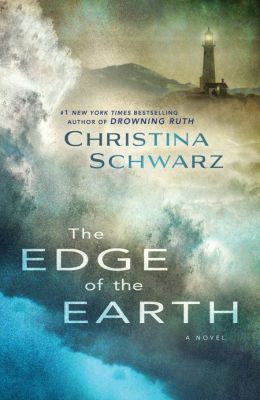




 How did your serial killer, Harper Curtis, come about? Is he based on any real-life killers?
How did your serial killer, Harper Curtis, come about? Is he based on any real-life killers?